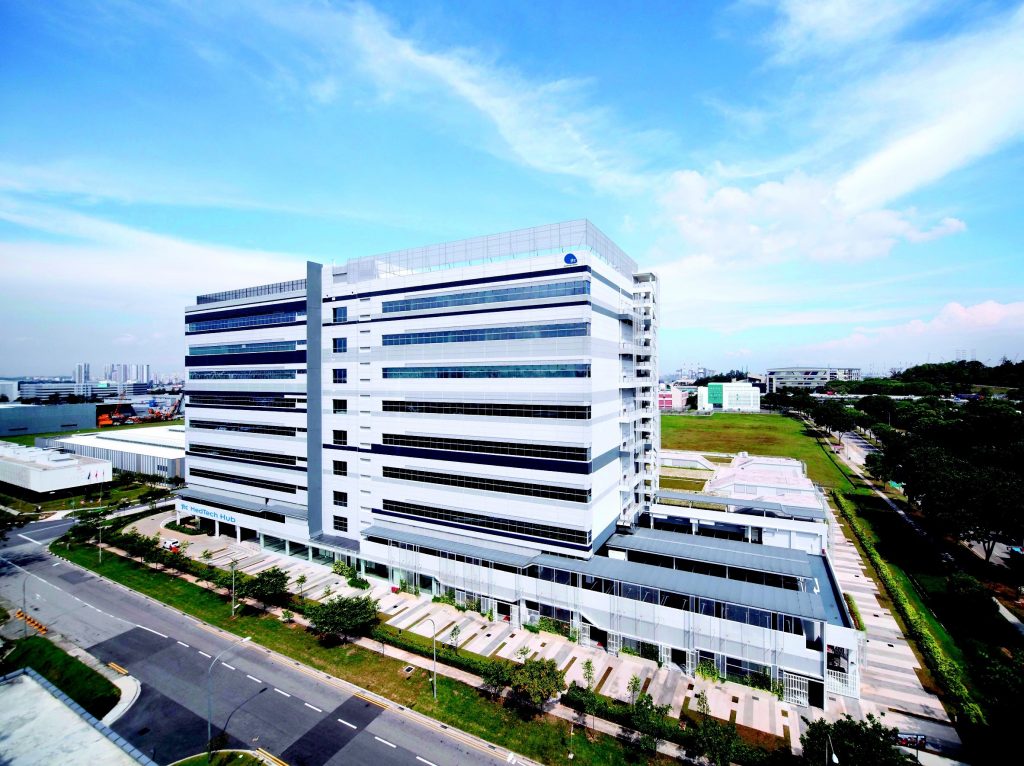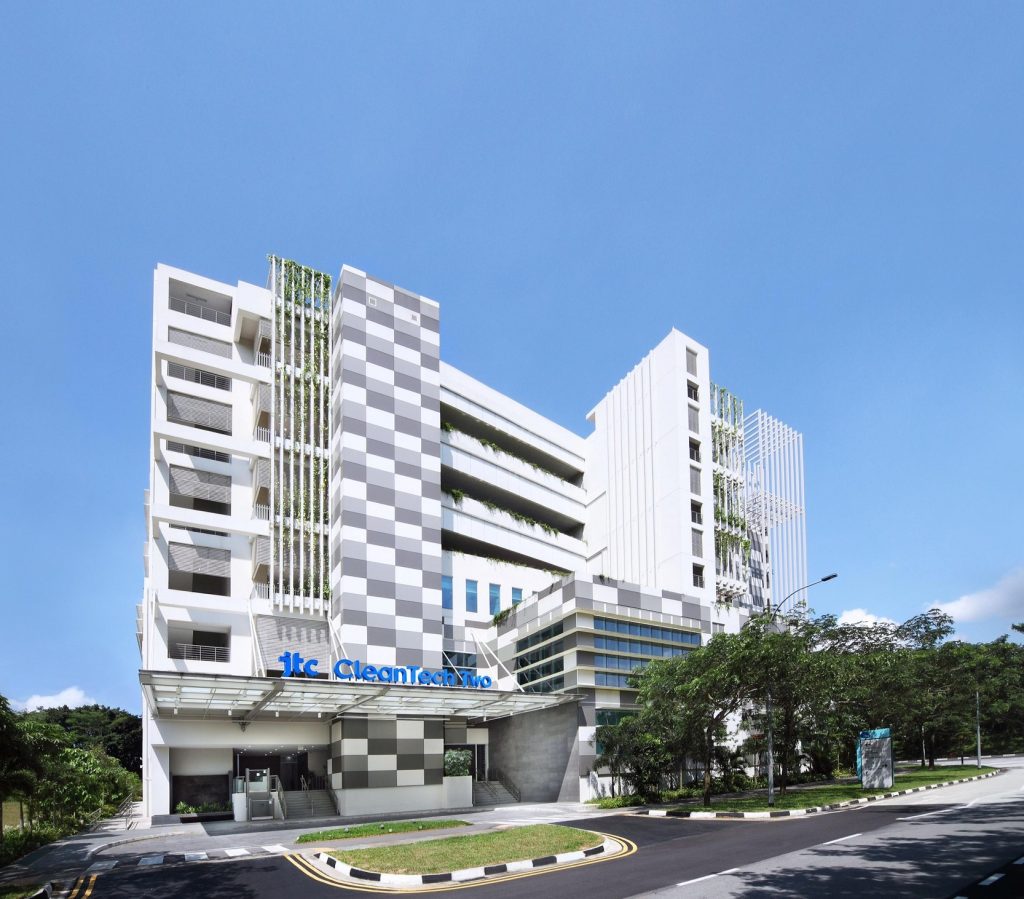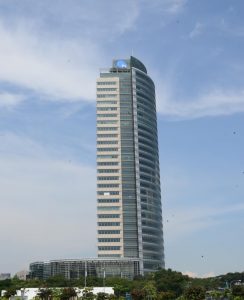All around us, smarter buildings provide energy-efficient, environmentally friendly workplaces
In cities all over the world, skylines teem with towers of concrete and steel, filled with an array of people and businesses. For the past half century, cities have continued to attract millions of people every year, resulting in added pressure on buildings and other urban infrastructure like parking, public transportation and roads.
Every day, more and more people commute, pass through security checks, go up and down in elevators, conduct meetings in cool and comfortable rooms, and work at well-lit desks in front of laptops with blazing-fast connections.
Technology plays a role in all they do, and in all our lives, as commercial buildings consume an estimated 40 percent of the world’s total energy.
But while people go about their day in these massive structures, they probably don’t realize that these buildings are now beginning to have intelligent ecosystems that keep up with maintenance, repairs, air conditioning and other operations, while also cutting down on overall energy consumption. This is especially important given that 70 percent of all electricity in the United States goes to supporting building operations.
This is a new era of digital business, a transformation that includes smarter buildings that reduce energy costs and deliver greener cities, while also surrounding people in safety and comfort, helping them to be the most productive they can be. Smart buildings not only use the Internet of Things and cloud-based systems that give new visibility and insight into equipment and energy status, but are now beginning to leverage Azure machine learning to pre-emptively identify equipment that might fail.
Buildings that were once constructed as system silos where air conditioning, elevators and lighting were planned and managed separately, with limited to no consideration of the impact of one on the other – are now being redesigned in a more holistic way. Microsoft customers like JTC are now using these new integrated solutions to gain improved building management insights that, for example, can result in tweaks to air conditioning systems leading to more efficient air flow and reduced cooling costs.
“JTC foresees new challenges with our growing portfolio of estates and buildings, as well as the management of increasingly complex buildings, higher customer expectations and the need to manage our developments’ sustainability,” says Yim Cheng Siew, chief information officer for JTC.
“These have led JTC to consider a new facilities management model that centralises the operations of all building services. Additionally, with our developments geographically dispersed across Singapore, the JTC Integrated Smart Estate and Building Operations System allows us to centrally and remotely monitor, analyse and optimise its building and estate systems.”
Since 1968, JTC has been developing industrial land and space to catalyze and enable the growth and transformation of industries and enterprises, in support of Singapore’s economic development. Its landmark projects include Jurong Island, the cornerstone of Singapore’s energy and chemicals industry; one-north (a work-live-play-learn development) and the Jurong Rock Caverns, Southeast Asia’s first commercial underground storage facility for liquid hydrocarbons.
JTC continues to drive innovation, sustainability and productivity by leveraging advances in the use of analytics and big data as it develops energy-smart facilities.
At Hannover Messe, the JTC Integrated Smart Estate and Building Operations System debuts as a proof-of-concept, showcasing how JTC is using technology to reduce energy usage, improve building tenants’ comfort and help the company be more productive and efficient in managing its buildings. There are dashboards, fault analytics and field productivity mobile apps for these smart buildings, so they’re all connected and communicating at all times.
“Once implemented across all 39 buildings, our partners who are helping us maintain our properties will also have to adapt their own work processes,” says Yim Cheng. “For example, instead of conducting the routine scheduled checks on mechanical ventilation equipment on a floor by floor basis, our partners should use the fault information such as priority, location and fault age to focus on equipment that needs attention. This will also result in increased productivity and higher efficiency for our partners.”
In addition to the energy and maintenance solution, JTC is looking into expanding the system to manage services delivered by their partners, such as monitoring of shuttle bus services, grounds cleaning and parking.
At Microsoft’s Redmond, Washington headquarters, a data-driven software solution has dramatically lowered the cost of operating the company’s campus of over 125 buildings through a similar approach that focuses on leveraging Azure and IoT to centralize its facilities management operations, serving as an inspiration to others. The “Internet of Things meets Big Data” approach has been so successful that Microsoft Services and its partners – like Iconics – are now helping other enterprise building managers deploy the same solution.
And it’s not just abroad where these kinds of systems can lower energy consumption. Data from the Energy Information Administration (EIA) shows that the industrial sector accounts for the largest share of energy consumption in the United States. In 2012, the industrial sector accounted for 32 percent of the total energy consumption in the country, with manufacturers accounting for 74 percent of it – 24 percent of all energy consumed in the United States.
The modern city wouldn’t be possible without Otis Elevator, whose founder invented the safety elevator more than 160 years ago. Today, Otis remains the industry leader, moving 2 billion people a day through the world’s urban landscapes. Otis has nearly 2 million elevators and escalators under contract, and 30,000 mechanics spending approximately 60 million hours a year servicing the equipment.
On the heels of launching its new connected Gen2 elevator, initially available in Europe, Otis and its parent company, United Technologies Corp., announced they will expand use of the Microsoft cloud through the Azure IoT Suite as part of a strategic alliance with Microsoft. Otis will also use a powerful global Microsoft Dynamics CRM system that will link operations in more than 200 countries and territories. And, Otis will also use big data to drive preventative maintenance through the Cortana Intelligence Suite.
In elevators all over the world, thyssenkrupp is also well-known. It uses IoT technology to connect and monitor its systems, increasing both the reliability and safety of its elevators. Using Microsoft Azure Machine Learning, thyssenkrupp is establishing a completely new preventive maintenance system called MAX. Instead of responding to problems, service engineers can now access real-time data and take action to prevent elevator breakdowns. These smart elevators will automatically provide condition reports, minimizing breakdowns and downtime.
Also at Hannover Messe, Microsoft’s Energy Smart Building partner, ICONICS introduces its IoT Gateway Suite, which includes enhanced integration with the next generation of Microsoft Azure cloud computing platform and services.
“ICONICS is proud to demonstrate its Azure-based IoT solutions highlighting its commitment to Industrie 4.0 alongside Microsoft at Hannover Messe 2016,” says Russ Agrusa, president and CEO of ICONICS, referring to a term describing the fourth industrial revolution, which incorporates the Internet of Things. “Such cloud-enabling technologies greatly simplify the deployment of IoT applications that will scale and be future-proof.”
ICONICS has more than 300,000 installations in more than 60 countries. The company has partnered with Microsoft Services to help support customers, like JTC, focused on automating, monitoring and optimizing some of their most critical assets – buildings.
At Hannover Messe, Microsoft and its partners like ICONICS and thyssenkrupp, and customers like JTC, are all integral to and benefiting from this next revolution in business, transforming the world around us with smart buildings that leverage the power of intelligent systems to gain new insights, anticipate potential problems, and provide energy efficient, environmentally friendly spaces in which productivity thrives.










